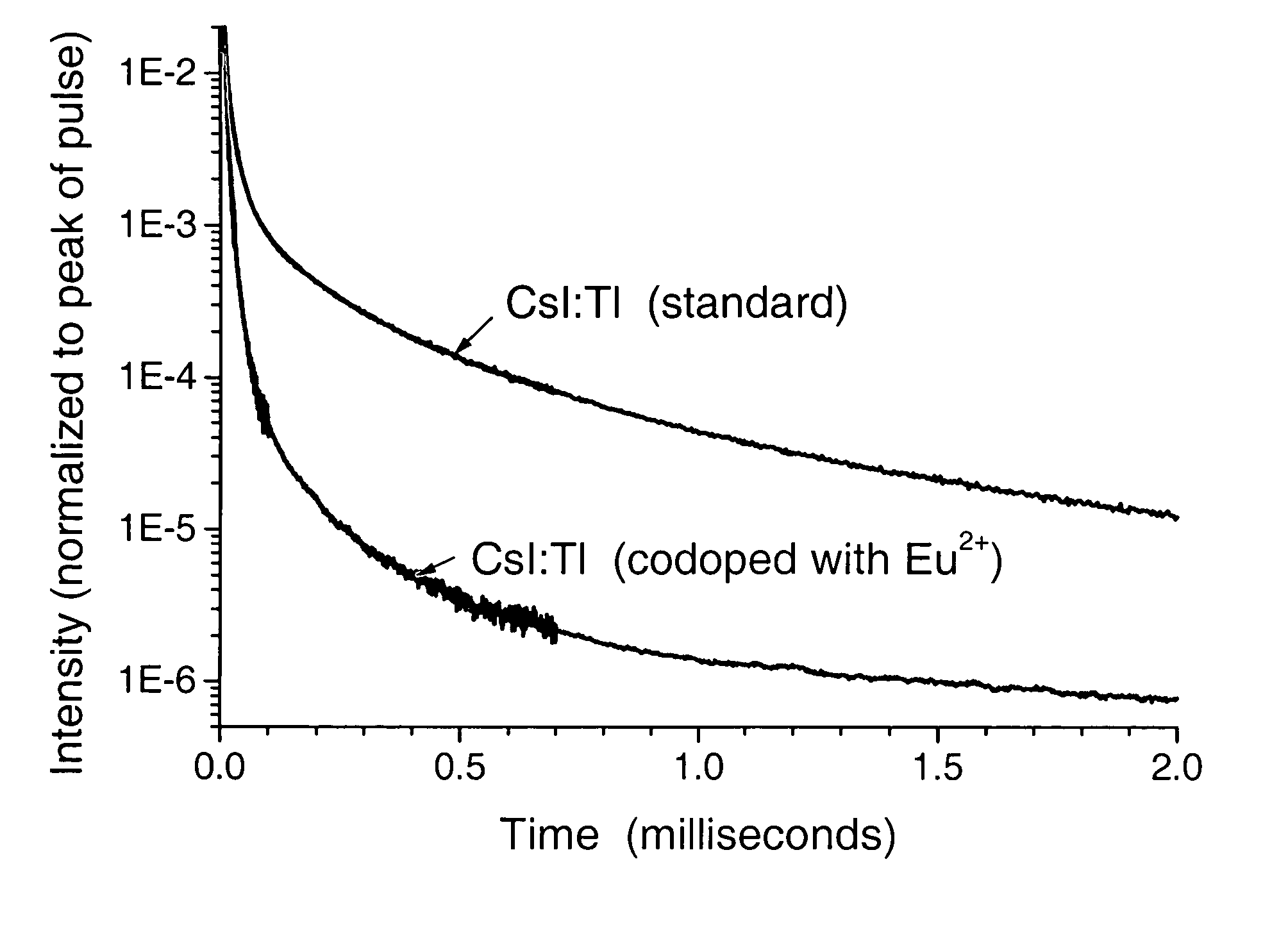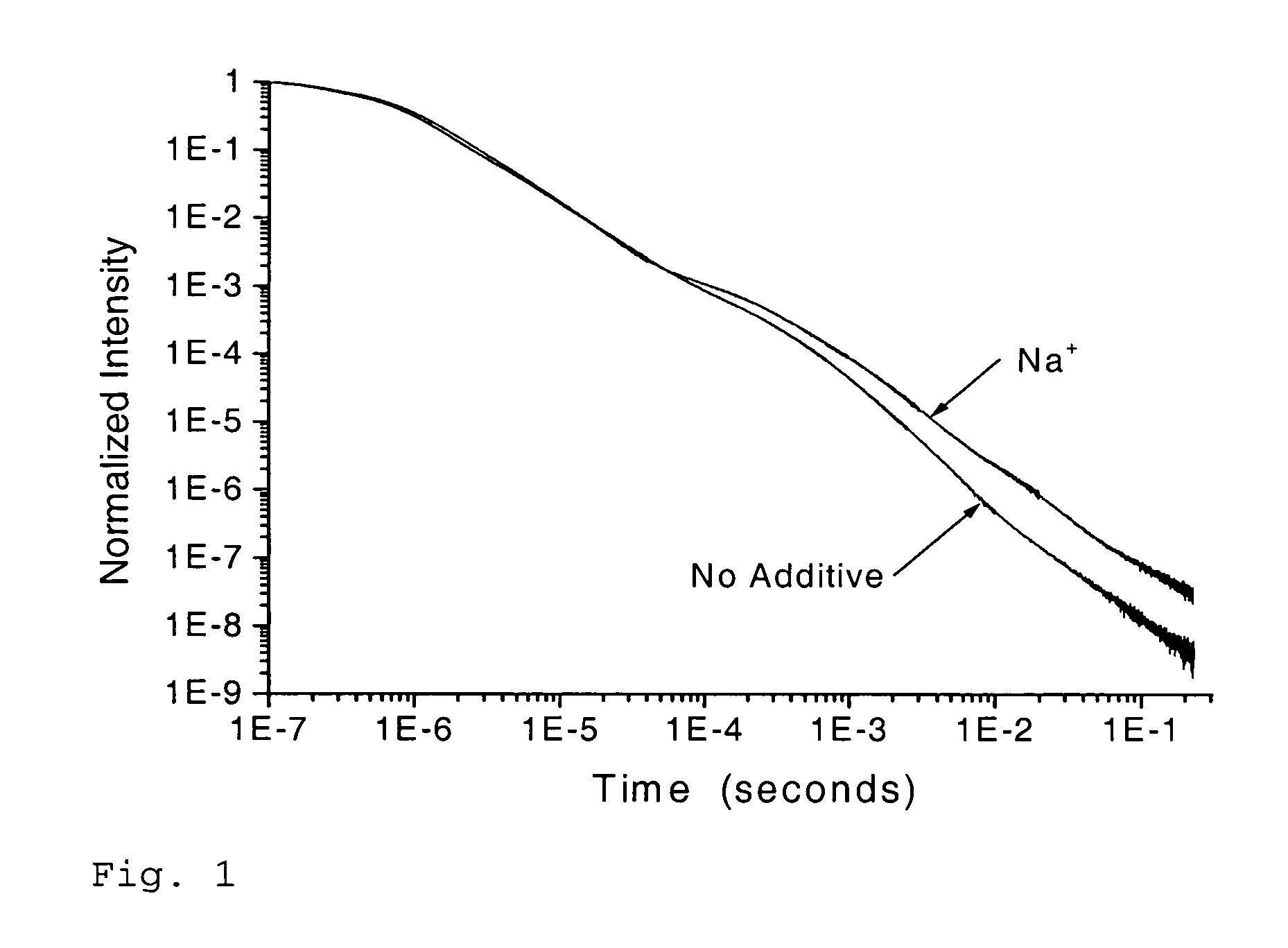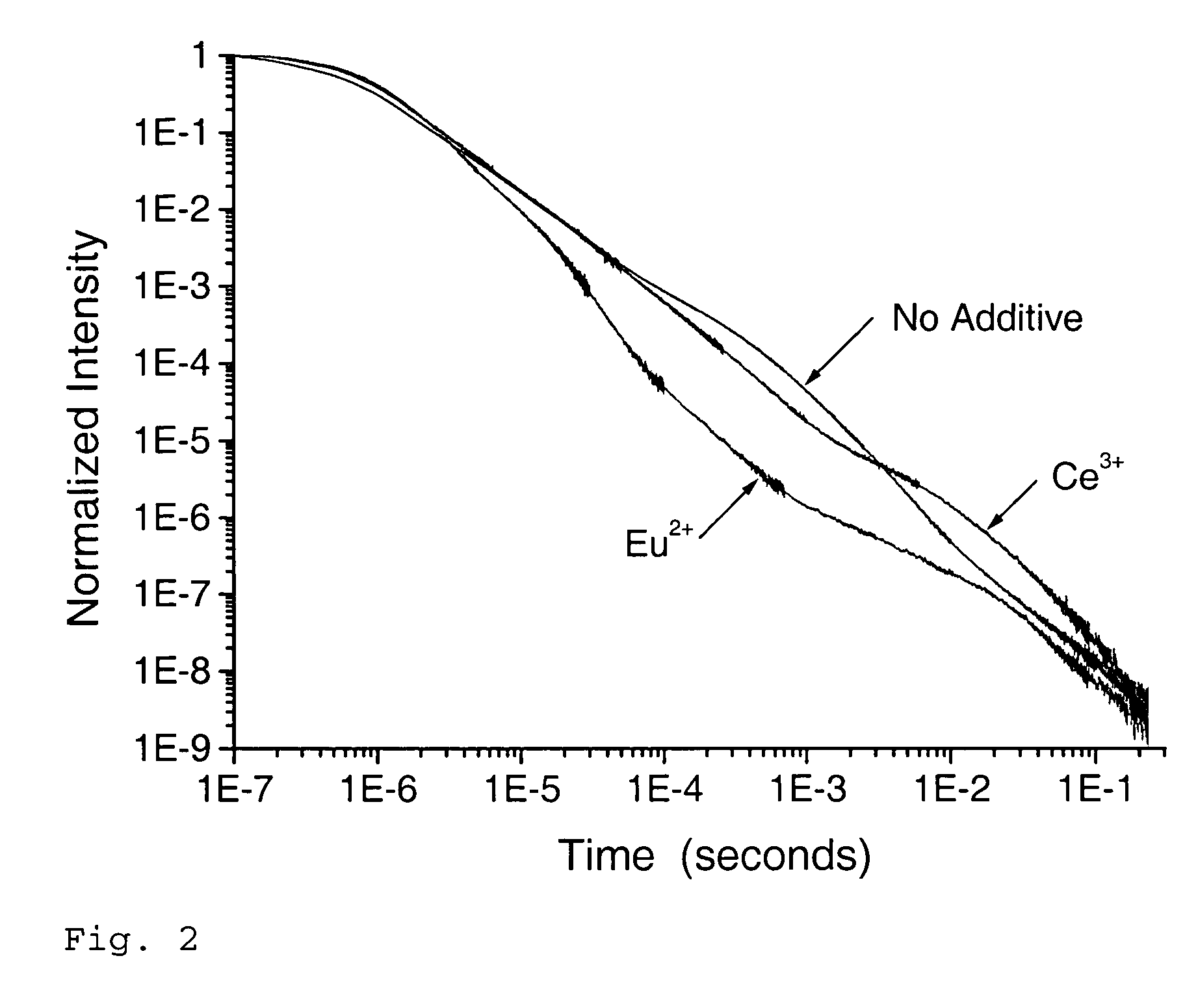Scintillation materials with reduced afterglow and method of preparation
a technology of scintillation materials and afterglow, applied in the field of scintillation materials, can solve the problems of significant material loss during processing, ceramic gos, even more expensive, and the cost and availability of scintillation materials and any necessary machining,
- Summary
- Abstract
- Description
- Claims
- Application Information
AI Technical Summary
Problems solved by technology
Method used
Image
Examples
Embodiment Construction
[0041]Scintillation materials with reduced residual afterglow, methods to fabricate scintillation materials with reduced residual afterglow, where the scintillation materials have either single crystal or multiple columnar structure, and systems utilizing the materials of this invention are described hereinbelow.
[0042]In one embodiment, scintillation materials of this invention have an alkali halide host material, a (first) scintillation dopant of various types, and a variety of second dopants (co-dopants). In another embodiment, scintillation materials of this invention have an alkali halide host material, a (first) scintillation dopant of various types, a variety of second dopants (co-dopants), and a variety of third dopants (co-dopants). The co-dopants of this invention are selected to divert carriers away from the sources of the afterglow and recycle them rapidly enough to enhance the desired prompt emission.
[0043]The level of scintillation doping (activator concentration) requi...
PUM
 Login to View More
Login to View More Abstract
Description
Claims
Application Information
 Login to View More
Login to View More - R&D
- Intellectual Property
- Life Sciences
- Materials
- Tech Scout
- Unparalleled Data Quality
- Higher Quality Content
- 60% Fewer Hallucinations
Browse by: Latest US Patents, China's latest patents, Technical Efficacy Thesaurus, Application Domain, Technology Topic, Popular Technical Reports.
© 2025 PatSnap. All rights reserved.Legal|Privacy policy|Modern Slavery Act Transparency Statement|Sitemap|About US| Contact US: help@patsnap.com



